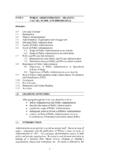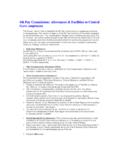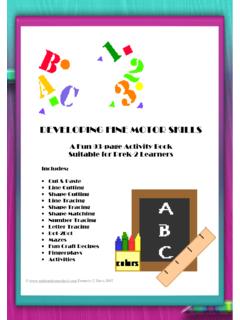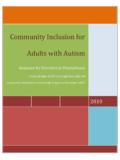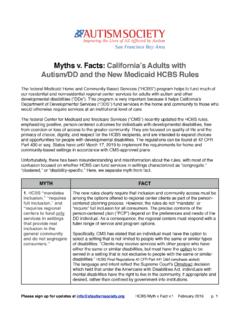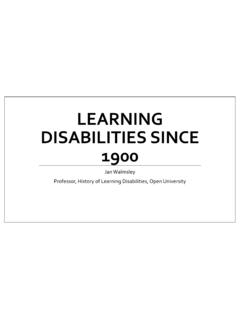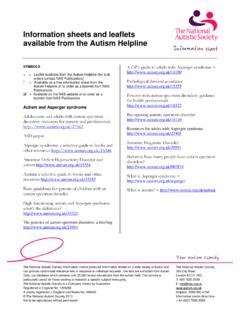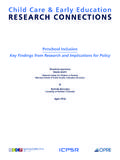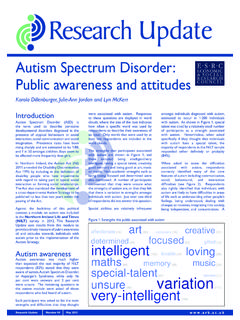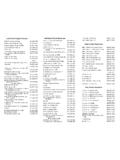Transcription of Inclusion and autism: is it working? - freewebs.com
1 Inclusion & AutismInclusion and autism :is it working? 1,000 examples of Inclusion in education and adultlife from The National Autistic Society s membersJudith Barnard Aidan Prior David Potter1 Inclusion & AutismCopyright The National Autistic Society 2000 First published in the UK by The National Autistic Society, 393 City Road,London EC1V 1NG, registered charity number 269425. All rights reserved. Nopart of this publication may be reproduced or transmitted in any form or byany means, electronically or mechanically, including photocopying, recordingor any information storage or retrieval system worldwide, without the priorpermission in writing from the by Aidan Prior Communications and data processing by Independent Data 1-899280-36-72 ContentsInclusion & AutismIntroductionPart one: Summary findings with quotes andcase studiesInclusion ..6 Experience of in Scotland and and two: Summary results of surveyThe sample and response findings:Parents and carers of children under and carers of children over with 1.
2 What are autistic spectrum disorders?.. in & Autism4 IntroductionInclusion & AutismWe picked Inclusion as the focus for a survey this yearas it seems to be a prominent principle of governmentpolicy at a national and local level. But people areconstantly questioning exactly what it means. Manypeople interpret it within a narrow educationalcontext where it is often used to describe theintegration of children with special educational needsinto mainstream schools - sometimes linked with theclosure of special schools. We wanted to look at thewider picture: Inclusion in society - a broad concept ofsocial Inclusion - as it touches the lives of real families:our that end we devised a questionnaire which wassent to 2,409 National Autistic Society (NAS)members across the UK. Over 1,100 were first 1,000 were analysed. The survey wasdivided into three sections: one for parents/carers ofschool-aged children; one for parents/carers of adultchildren; one for people with autism or Aspergersyndrome.
3 As the response rate to the third sectionwas anticipated to be low (previous questionnaireshad demonstrated this to be the case) a series ofsupplementary interviews with adults with autism orAsperger syndrome were carried out. Some adultswithin NAS services also completed thequestionnaire with help from their support report highlights the key findings from our surveyand interviews and identifies a number ofrecommendations for the future. Differences inScotland and Wales compared to the overall UKresults have been identified separately. This report alsofeatures key findings from the latest research into theannual cost of autism and Asperger syndrome in theUK and the consequences of late diagnosis andintervention (see page 12). The NAS will work withpolicy and decision-makers in central and localgovernment to ensure that these issues are have used the term ' autism or Asperger syndrome'throughout this report to refer to autistic spectrumdisorders.
4 Appendix 1 (page 25) gives a more detailedexplanation of autistic spectrum disorders. Unlessmentioned otherwise, all findings relate to bothautism and Asperger mid-point lines on diagrams (------) indicate themiddle point of agreement and disagreement interms of from surveysWe have used quotes from surveys to illustrate keyfindings. The reference to low, medium or highfunctioning relates to a question asked of allrespondents as to the ability of the child or adult withautism or Asperger syndrome. 'High functioning' or'very high functioning' relates to the more able end ofthe autistic spectrum where the disability may notalways be so obvious. 'Low functioning' relates tothe less able end of the FindingsInclusion & AutismInclusionAutism and Asperger syndrome are described as a'hidden' disability - they are not easily recognisedand as such do not attract the same attention fromsociety as more obvious physical disabilities.
5 Asawareness of autism amongst most of the populationis very low and the nature of the disability oftenextremely complex ' Inclusion ' is harder to achieve asit requires adjustments from others if people withautism and Asperger syndrome are to be able toparticipate fully in society. The NAS report autism - The Invisible Children?(Peacock, Forrest and Mills 1996) identified thedifficulties faced by children and their families as aconsequence of poor planning and co-ordination bylocal authorities and of inadequate support forstudents with autism in the mainstream. This surveydemonstrates that many schools have improved inrecent years. Parental satisfaction is increasing, butnot for all age groups or for all types of provision yet.' Inclusion is not about everyone being the same but abouthaving the choice to live where they feel most comfortableand having the opportunity to 'join in' with what they wantto - and not what someone else thinks they ought to.
6 ''There should be an awareness by policy makers thatinclusion should be about choice. Residential communitiescan be used to help create opportunities in the localcommunity and should not be seen as 'excluding' peoplefrom 'the' community. Our son has far more access to thecommunity through the activities and support provided byhis residential community than ever he would if stuck in ahouse in a street relying totally on someone/carer beingavailable to take him out.'Parent of a low functioning adult living in atherapeutic communityThe policy of Inclusion must ensure that appropriatelearning or other positive experiences take place. It isnot simply about where an individual is educated orreceives services or support; it is about the quality ofsuch a service or support. Inclusive education is aprocess involving the restructuring of the curriculumand classroom organisation. This distinguishes itfrom integration which focuses on the placement ofan individual or group and that individual or grouphaving to adapt to what the school is able to should never replace sensitive, individualplanning.
7 This is particularly so in the case of acomplex but relatively small number of is a spectrum condition requiring a range ofindividual and often highly sophisticated majority of these will hopefully occur within themainstream of provision for all or most of the are, however those individuals whose interestswill be best served by discrete specialised services toprovide the most appropriate and meaningfuleducation and lifelong support. Experience of educationRoughly half the respondents to this part of thesurvey were in a mainstream environment and halfin specialist provision away from the positive picture begins to emerge for earlyyears provision which declines through the laterschool 73% of parents and carers are satisfied withthe educationtheir child is receiving (35% verysatisfied, 38% quite satisfied). Where autism specificsupport was provided - whether in autism specificunits attached to mainstream schools or specialschools, or autism specific schools parents satisfactionlevels were at their highest.
8 Those with a child in autismspecific provision were twice as likely to be 'very satisfied'(54-70%) than those whose child was in a mainstreamHow has your view changed over the lasttwo years?much more satisfied now(19%)a little more satisfied now(19%)no change (38%)a little less satisfied now (9%)much less satisfied now (8%)Note: 7% not stated6 Summary FindingsInclusion & Autismsetting (23-41%). Only 12% of parents with childrenin an unsupported mainstream primary school arevery satisfied. The evidence therefore demonstratesthat staff training and expertise in autism is key if theneeds of each individual child with autism orAsperger syndrome are to be met; also that eachchild should have access to appropriate levels ofsupport. The type of school may be important insome instances because the particular needs of achild may require a very specific setting.
9 But theoverall finding of this survey highlights the need forrelevant training and expertise for staff andappropriate support for the child as being ofparamount importance.'The best! The teachers and support staff in my son's autisticunit are highly trained professionals, truly experienced inautism and its management. As parents we are continuallylearning from them as our mentors - it's wonderful to havethese professionals who can help us to understand andmanage our autistic son. The classroom set-up and approachis appropriate. Staff:pupil ratio is very high. Structure is theessence of the unit. Social and independence skillsdevelopment targets are included. All children arestatemented and have individual education plans.'Parent of a high functioning child, in an autism specific unitattached to a mainstream primary school'The school has welcomed him and been open tounderstanding him and his problems.
10 He has the exampleof a 'normal' peer group. He has virtually full-time has an excellent speech therapist who he sees weeklywith one or two different 'normal' children for social skillsetc. He also sees a specialist teacher once a week whoworks in a similar way and who helps advise teachers andsupport workers on curriculum if necessary. It is a team. Butit took a lot of fighting for!'Parent of a high functioning child in mainstream primary with supportParents are no happier with generic special schools(without autism specific provision) than they are withmainstream provision with some learning with autism and Asperger syndrome haveuneven abilities and it may not be appropriate forthem to be in a setting for children with learningdisabilities where it is assumed that abilities are equalacross a range of subjects.'Stop babysitting and start teaching.'Parent of a low functioning child in a special needs primary school'Teachers and staff do not seem to have much knowledgeabout teaching children with autism at his specialplaygroup.

